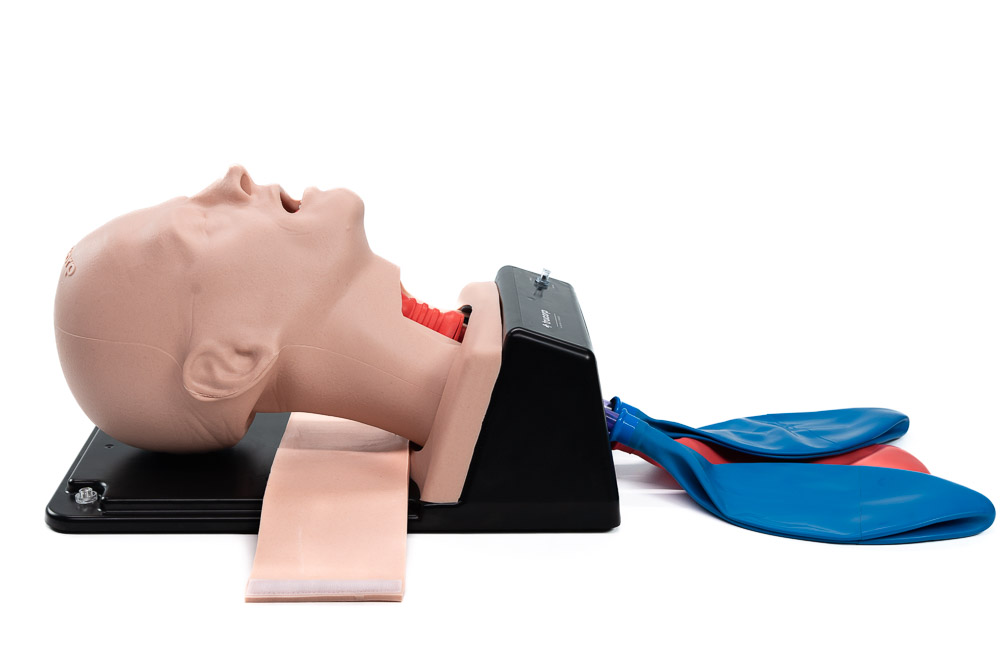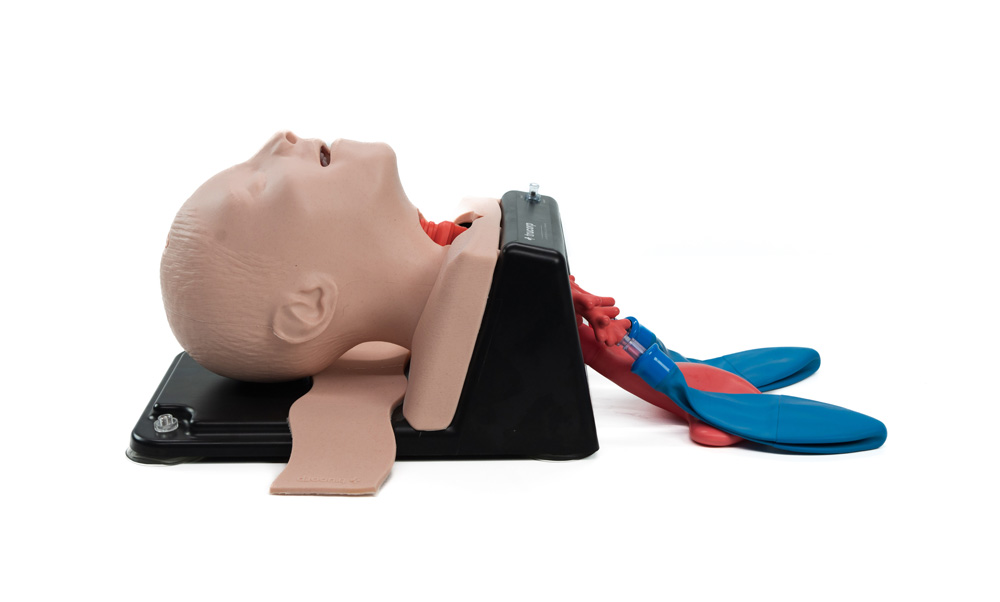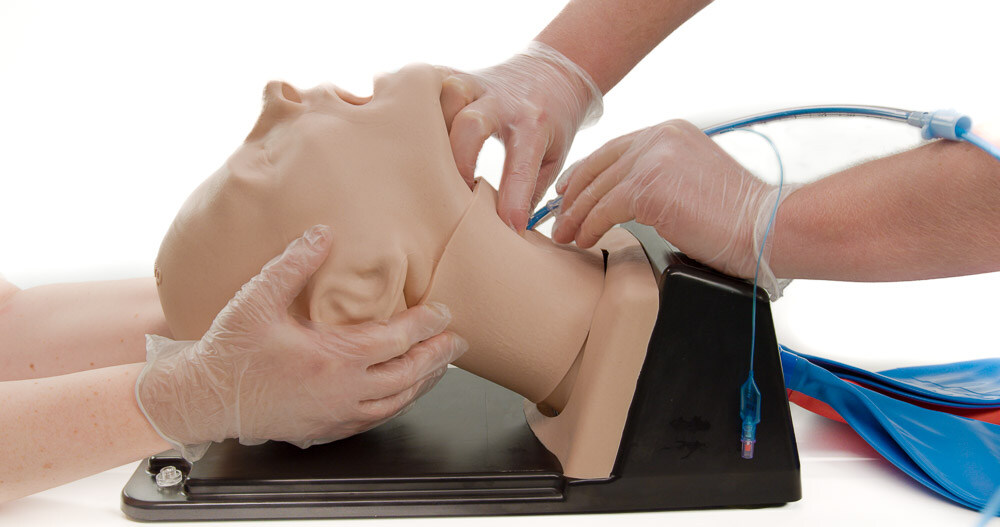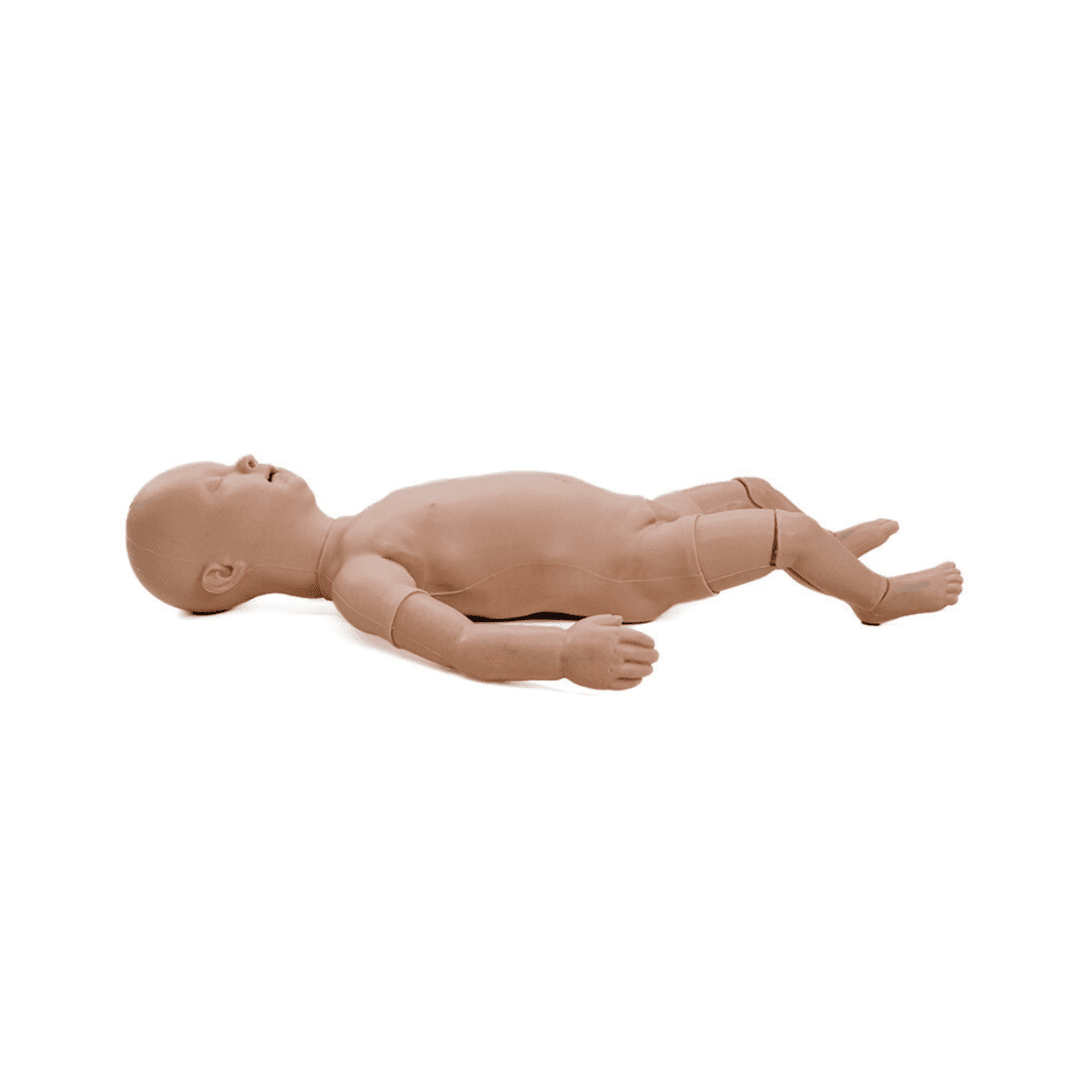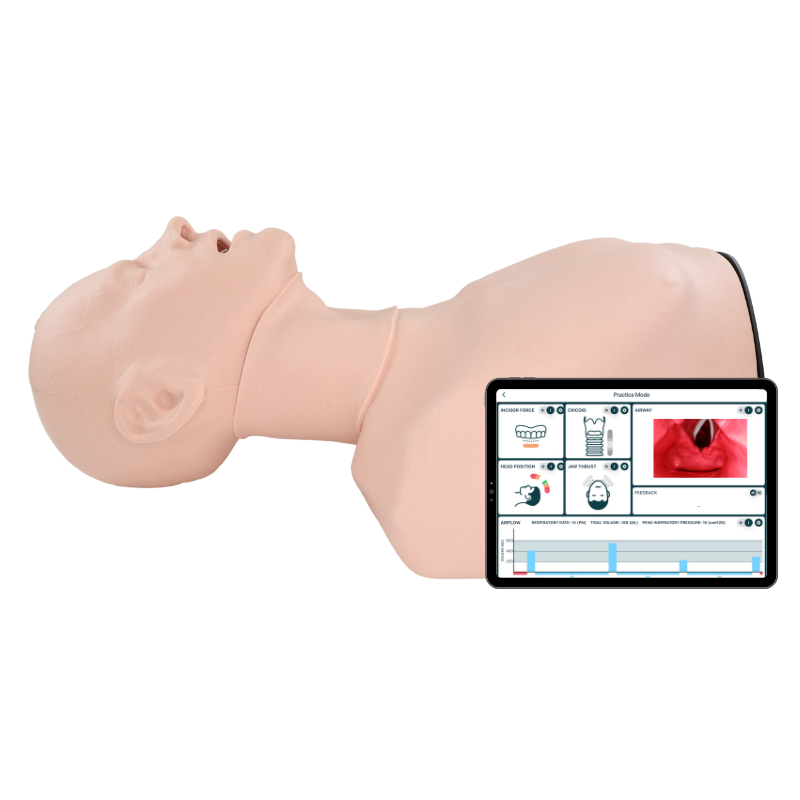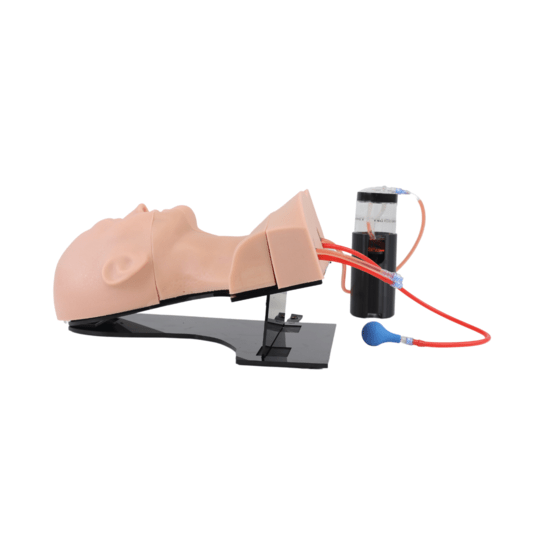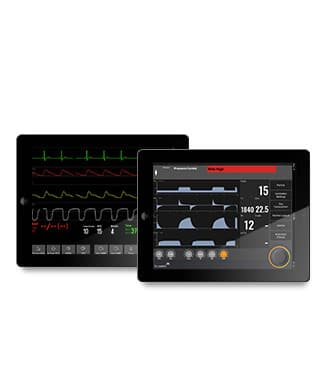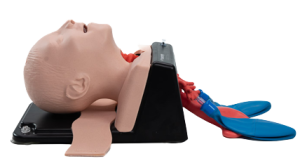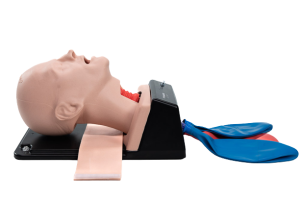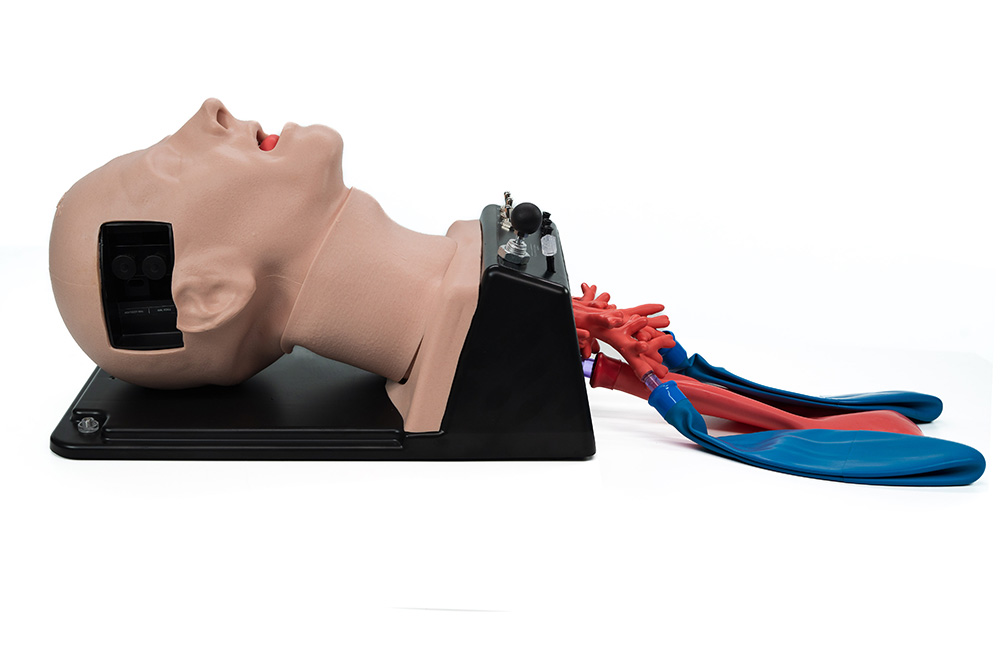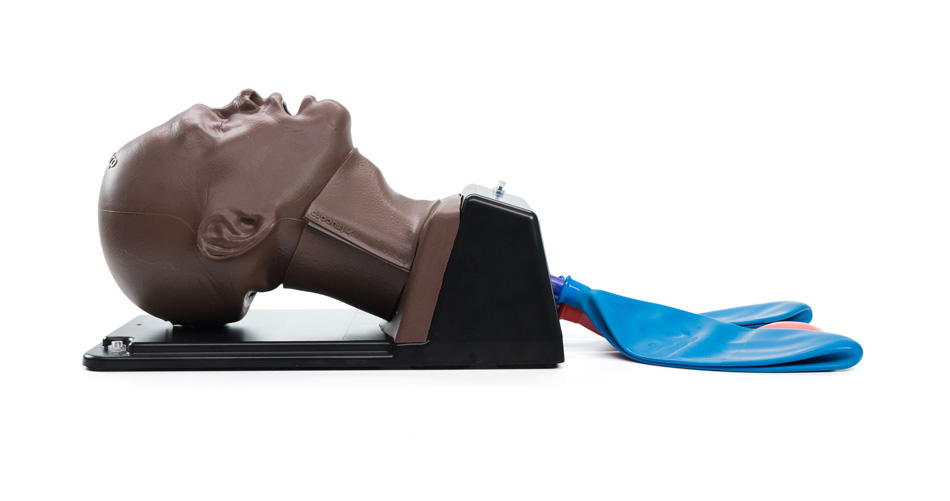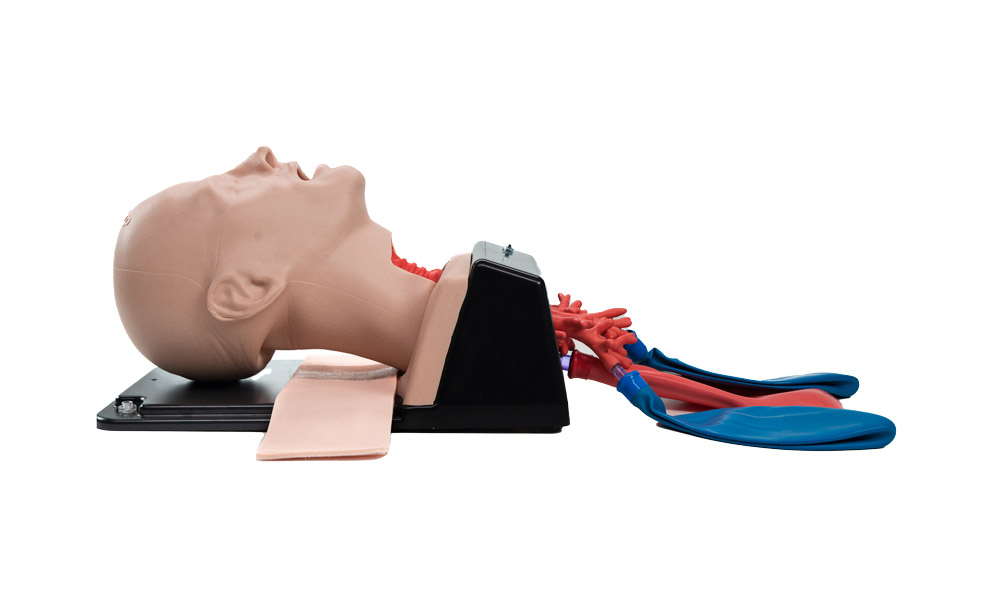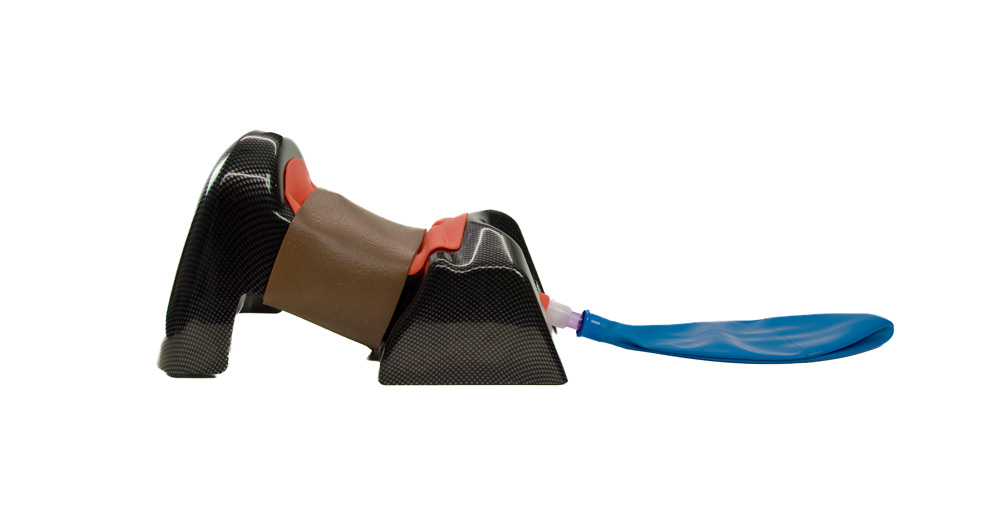外科用輪状甲状間膜切開気道マネキン
本物そっくりで耐久性のある外科用気道トレーナー
緊急外科的気道トレーニングには、輪状甲状間膜切開術(輪状甲状間膜切開術または円錐切開術とも呼ばれる)を含むいくつかの異なる方法が含まれます。
TruCorp 気道マネキンは、輪状甲状間膜切開術と気管切開術、およびその他多くの気道管理技術のデモンストレーションと練習に最適です。
実物に忠実な内部および外部の解剖学的構造には、浮腫をシミュレートする膨張可能な舌、目に見える触知可能なランドマーク、および肯定的なユーザー フィードバックが含まれます。
マネキンの特徴:
- 実際の患者のCT DICOMデータを使用して構築された解剖学的特徴
- 触知可能な輪状軟骨、喉頭軟骨、気管輪
- 胸骨切痕の容易な識別
- 皮膚の覆いはリアルな質感でリアルさを増しています
当社の輪状甲状間膜切開術トレーナーはすべて、以下の指導および練習に使用できます。
- 針輪状甲状間膜切開術
- 外科的輪状甲状間膜切開術
- セルジンガー法を用いた経皮輪状甲状間膜切開術
- FONA気道管理
- 経皮気管切開
- ファイバースコープ喉頭鏡検査
- 二重経鼻気管挿管
- エアジェット換気
- 気管内挿管と気道管理スキル
- 気管偏位と頸静脈拡張の特定
外科用クリクトレーナー用の交換可能な喉頭および首の皮膚
TruCorp の輪状甲状間膜切開術トレーナー用交換部品と消耗品は、交換が迅速かつ簡単で、忙しい教室環境での効率的な練習に最適です。
追加オプションには、交換可能な肺バッグが含まれます。
輪状甲状膜切開術シミュレーター+患者モニターアプリ
TruMonitor アプリは、 Apple または Android のスマートフォンやタブレット上で患者モニタリング デバイスをシミュレートする簡単なトレーニング プラットフォームです。
当社の TruMonitor患者モニター シミュレーターは使いやすく、輪状甲状間膜切開術トレーナーと併用して、臨床上の意思決定、乗務員リソース管理、臨床タスク/手順のトレーニングを統合できます。
TruMonitor アプリを使用すると、既存の機器やシステムを使用した共同トレーニングにより、医療現場内の潜在的な脅威を特定するのに役立ちます。TruMonitor は、救急医療環境、シミュレーション センター、病院前ケアと病院のベッドサイド ケアの両方を備えた大学教育病院に最適です。
すべてのTRUCORP SURGICAL CRICトレーナー:
針輪状甲状間膜切開術
針による輪状甲状間膜切開術は、小児の解剖学的構造上で実施しやすく、喉頭を損傷するリスクが少ないため、小児および乳児の緊急気道確保に好まれる手法です。4
針を使用して輪状甲状膜を穿刺します(場合によっては、針を挿入しやすくするために、最初に小さな切開を行うこともあります)。
針と針上カテーテルは膜の下半分から挿入されます。注射器と針が取り外され、カテーテルが一時的に安全な気道を提供します。5
針輪状甲状間膜切開術の利点は、最初の試みで正しい位置が正しく特定されなかった場合に合併症のリスクが軽減されることです (メスによる誤認と比較して)。
外科的輪状甲状間膜切開術
外科的輪状甲状膜切開術(開放輪状甲状膜切開術とも呼ばれる)では、皮膚を垂直に切開し、輪状甲状膜を特定します。
膜を水平に切開し、手袋をした小指またはメスの鈍端を使用して開き、気管内チューブまたは気管切開チューブを通過させます。6
輪状軟骨や甲状軟骨を切らないように注意する必要があります。
セルジンガー法を用いた経皮輪状甲状間膜切開術
セルジンガー法を用いた経皮輪状甲状間膜切開術は、メルカー法またはメルカー セルジンガー法とも呼ばれます。輪状甲状間膜切開術におけるセルジンガー法は、ワイヤー ガイドを中空の針を通して気管内に進めることによって行われます。
針を取り外し、ワイヤガイドを使用して、気道カテーテル/拡張器アセンブリをワイヤ上で気管内に挿入します。
ワイヤガイドと拡張器を取り外した後、気道カテーテルを固定し、人工呼吸器に取り付けます。
この技術の利点は、カテーテルが挿入されるまでガイドワイヤーが気道へのアクセスを維持することです。7
FONA気道管理トレーニング
輪状甲状間膜切開術は、気道管理のための複数の前頸部アクセス (FONA) 技術の 1 つです。緊急時に FONA 気道管理を成功させるために必要なスキルを習得し、維持するには、適切なトレーニングが不可欠です。
当社の首の前部アクセス トレーナーは、麻酔気道管理、CICO イベントへの介入、および困難な気道管理のための FONA の効率的で現実的な練習に最適です。
輪状甲状間膜切開術と気管切開術
輪状甲状間膜切開術と気管切開術はどちらも、「挿管も換気もできない」(CICV) 状況での最後の手段として使用される緊急外科的気道確保技術です。
輪状甲状膜切開術では、気道を確保するために輪状甲状膜を穿刺します。輪状甲状膜は、首の前部にある甲状軟骨(喉仏)のすぐ下の喉頭(発声器)にあります。
気管切開は、通常は手術室で麻酔下で気管に外科的開口部(ストーマ)を作り、一時的または永続的な代替気道を確保します。
緊急時には、輪状甲状間膜切開術は気管切開術よりも一般的に難易度が低く、リスクも少ないと考えられています。1長期間の呼吸補助が必要な場合、通常は輪状甲状間膜切開術の代わりに気管切開術が行われます。2
出典:
- メイヨークリニック。[ 気管切開] 2018
- Peep Talving 医学博士、Ph.D.、Joseph DuBose 医学博士、Kenji Inaba 医学博士、他「外傷患者における緊急輪状甲状間膜切開術から気管切開術への変更」[JAMA Network] 2010
- ヘルマン、アントン。エピソード 69 肥満緊急管理。[ 救急医療事例] 2015
- Manoj K Mittal、MD、MRCP(英国)、FAAP。経皮経気管換気による針輪状甲状間膜切開術。[ UpToDate ] 2017
- Markowitz, Joshua E, MD, RDMS, FACEP. 外科的気道テクニック. [ Medscape ] 2018
- ニックソン、クリス。外科的輪状甲状間膜切開術。[ ライフ・イン・ザ・ファストレーン] 2017
- ボンズ、ジェームズ W、医学博士。経皮輪状甲状膜切開術。[ Jove ] 2018
